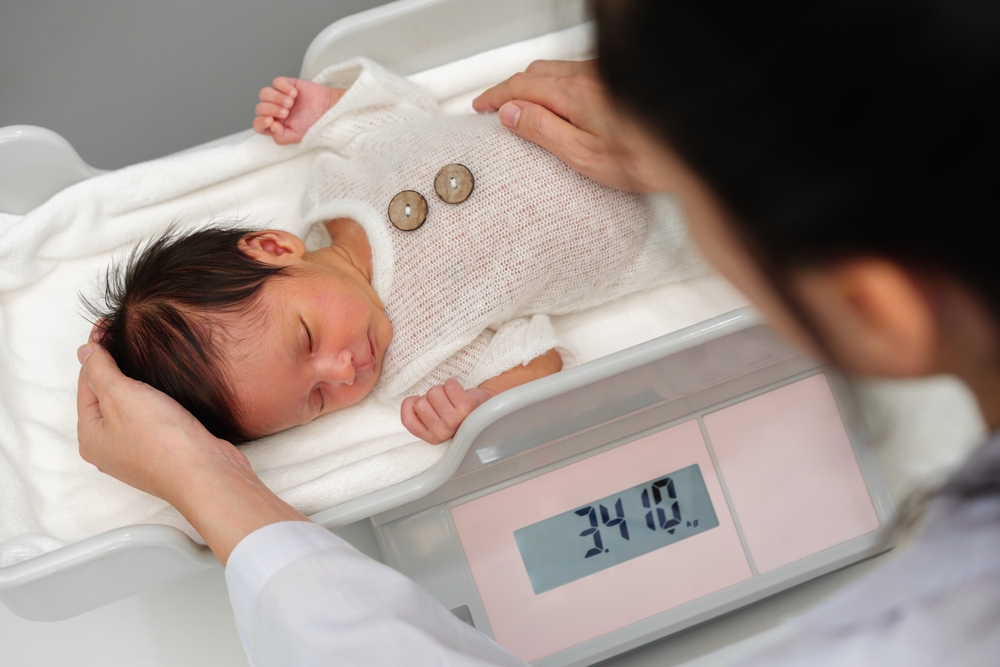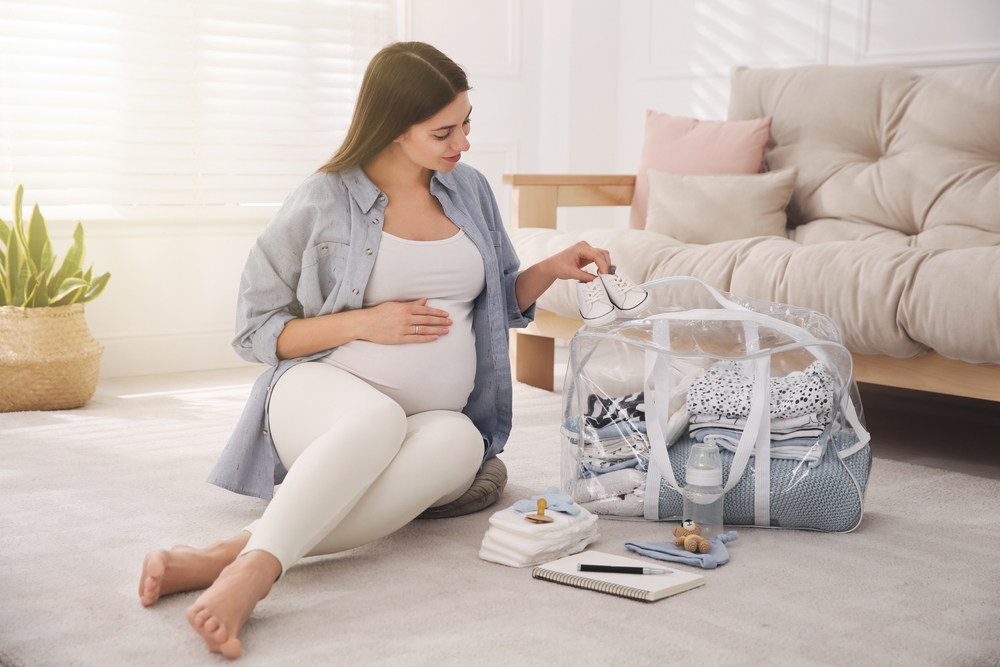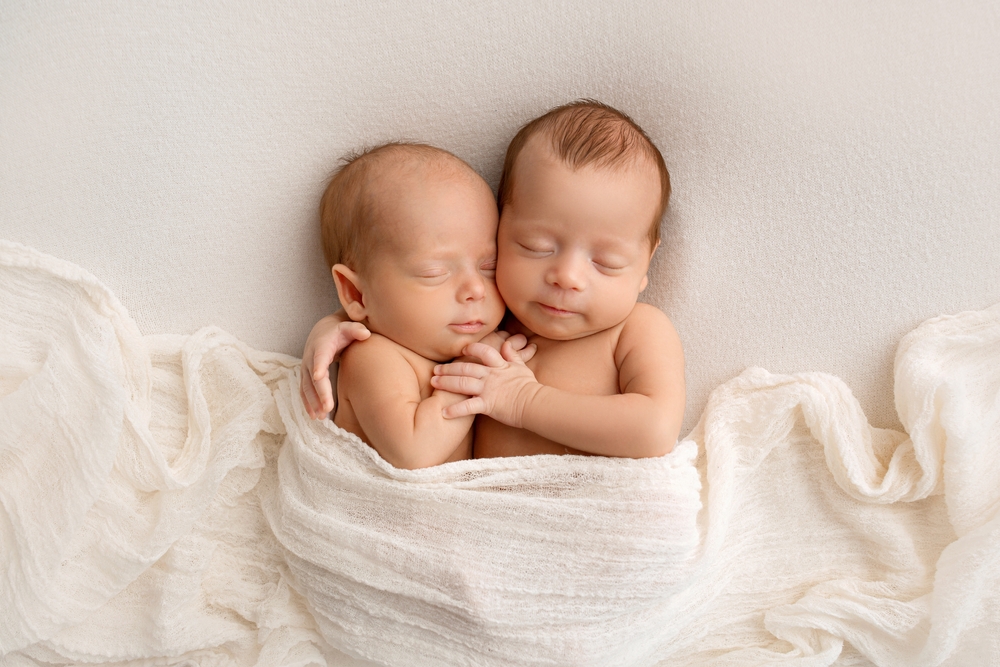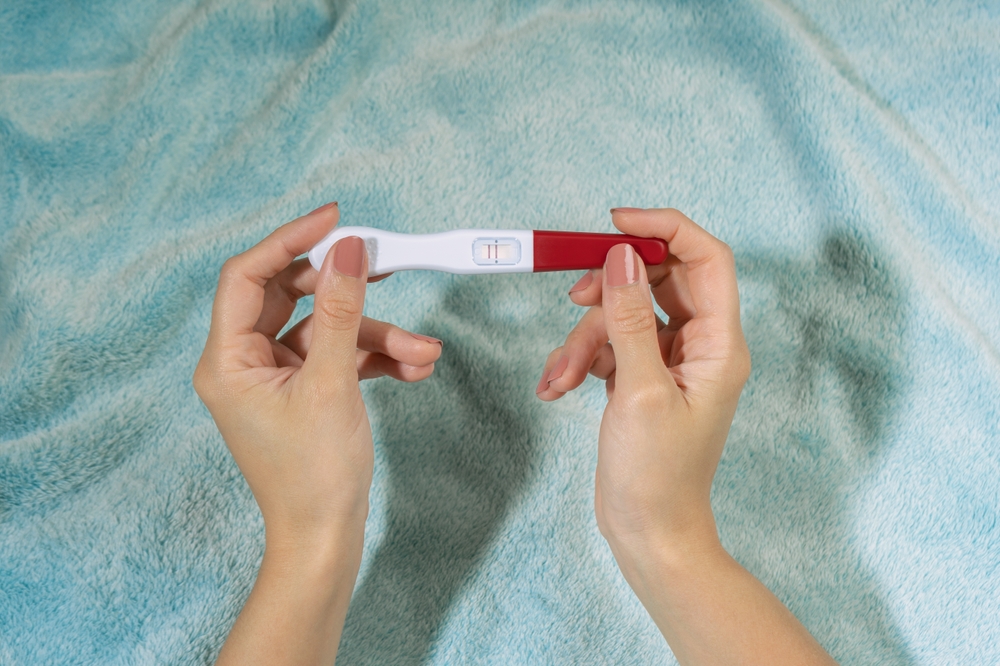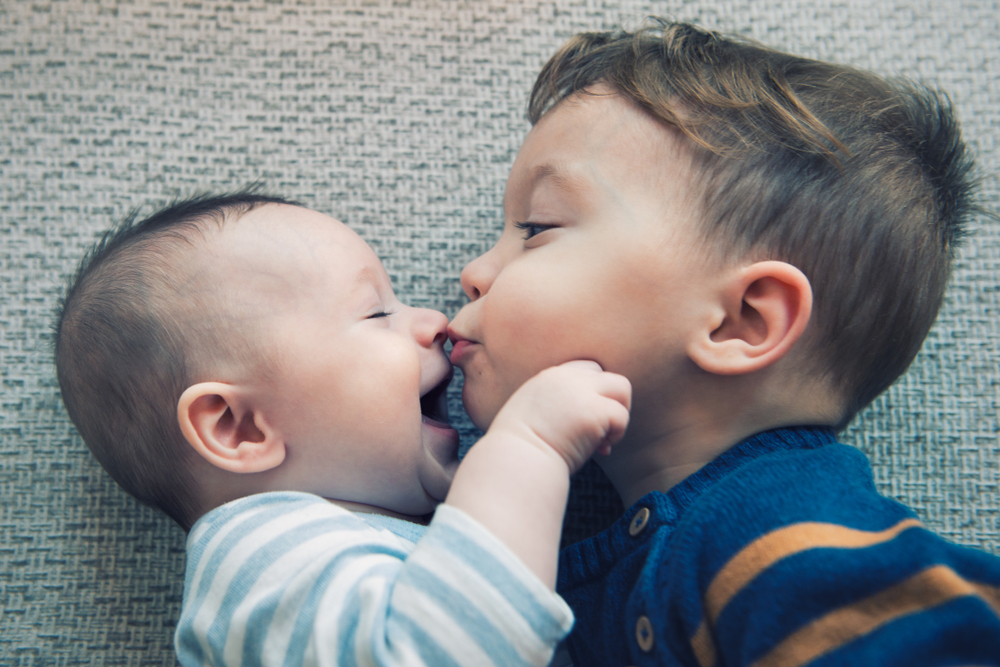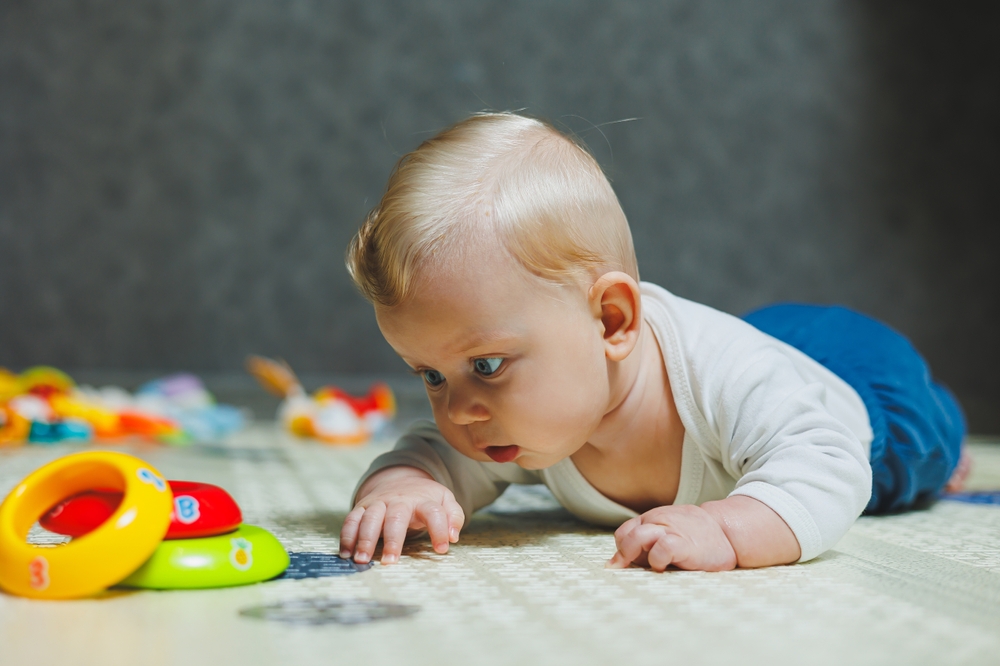Congratulations – if you’re reading this, you’re likely to be expecting two bundles of joy! Either that, or you’re just wanting to find a little more about everything there is to twins.
Finding out that you’re expecting twins can be the ultimate surprise – a good one of course. However, we understand it can feel a little overwhelming knowing that you’re going to have to tend to not one but two little ones. Don’t worry, although it may feel like double trouble, with a little preparation you’ll be ready to care for your two gorgeous babes in no time. Naturally, you’ll probably have a lot of parenting questions when it comes to tending to two. That’s why we’ve created this guide to answer your most common questions, from how to know if you’re having twins to what are the chances of having twins. Without further ado – let’s get ready to have double the fun!
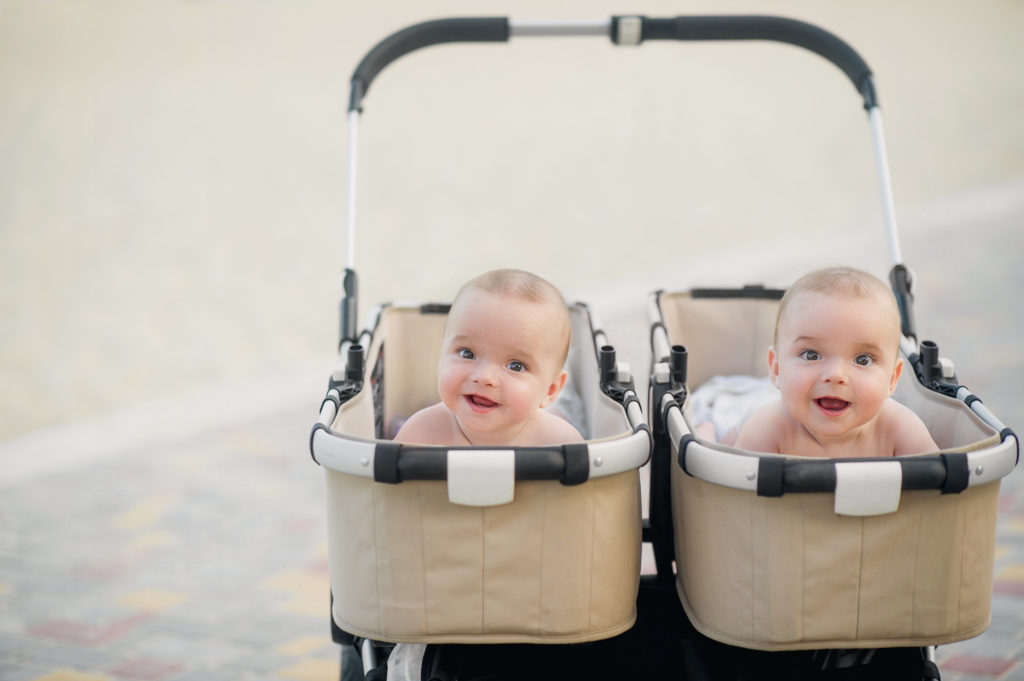
How to Have Twins
If you’re not pregnant with twins but want to be, you may be interested in knowing what are the chances of having twins and how to increase chances of having twins.
If you’ve always dreamed of having a big family, the thought of having twins may be appealing. However, it’s probably worth knowing how common twins are first. Whilst the number of twins and triplets born in the UK has increased over the past three decades, the odds of having twins are still fairly low. Much of it depends on whether you conceive your twins naturally, or with the help of fertility treatment. If you’re going down the natural route, just over 1% of pregnancies are twins, whereas IFV (in-vitro fertilisation) bumps up your chance, as 24% of births will be twins or even triplets. Therefore, twins, triplets or more little ones make up about 3% of the gorgeous babes born in the UK.
How to Get Pregnant with Twins Naturally

Whilst being pregnant with two tots has a low chance statistically, there are some factors that may increase your odds of having double the trouble. These include:
- Genetics – identical twins don’t run in families, it’s only non-identical twins that tend to. You may be thinking how do twins run in families? Well, it’s all to do with genes as there is a gene that makes women more likely to release two or more eggs during ovulation, and it’s this gene that runs in families. Generally, your chances of having two little ones may be higher if you’re a twin yourself or if you have many twins in your family.
- Age – as women age their pregnancies are more likely to be twins, so if you’re wanting two babes, your chances will be higher if you’re in your late 30s or in your 40s. Why? Because hormonal changes that occur as you come closer to menopause can actually encourage the body to release more than one egg during ovulation. So, if you’re an older mama, you’re in luck!
- Height – taller women have been linked to being more likely to have twins due to an insulin-like growth factor. For all the taller mummies out there, you may have two teeny tots on your hands in no time!
- Race – African American women are more likely to have two babes in comparison to any other race. Asian and Native Americans have the lowest chances of twinning. And if two’s not enough, Caucasian women (particularly those over 35) have the highest chance of higher-order multiple births (triplets or more).
How to Increase Chances of Having Twins
Some of the factors above that increase your chances of having twins may be out of your control, for example genetics and height. Fortunately, there are other rumoured ways to bump up your odds of having two bundles of joy:
- Consuming high amounts of dairy foods
- Conceiving whilst breastfeeding
- Having been pregnant before
However, the most reliable way to increase your at having two teeny tots is through IVF or other fertility treatments:
- IVF – according to the ASRM, using fertility treatments are the top factor that increase the chance of conceiving twins e.g. IVF. This is where a medical professional will extract eggs and fertilise them using your partner’s or a donor’s sperm in a lab. If successful, the embryo will be transferred back into your womb. If you’re wanting two little treasures, then they may be able to transfer more than one embryo into the womb to increase the chances of success. If both embryos are successfully implanted, you may have an extra surprise!
- Fertility drugs – other fertility treatments involve the use of medication to encourage the ovaries to produce mature eggs. This includes the popular fertility medication Clomid. Such treatments work by causing the ovaries to release two or more eggs within the same cycle. If both eggs are fertilised by sperm, you could potentially be on your way to having two babes.
How Do You Know if You’re Having Twins?
So, when does pregnancy start to show with twins? Well, if you’re expecting two bundles of joy, it’s possible you’ll begin to show before the end of week 12 of your pregnancy. Of course, your uterus will have to grow larger to make room for not one but two little ones. Therefore, whereas a mummy expecting just one baby may not show until after 3 or 4 months, you may show as early as 6 weeks.
There are also other tell-tale signs that may indicate you’re pregnant with twins. Although you may share many of the same symptoms as mums-to-be carrying one bub, when expecting two, you’re more likely to experience:
- Increased weight gain – one of the tell-tale signs of twin pregnancy is quickly gaining more weight than expected. Because of this extra weight gain, you may find that your baby bump starts to show a little sooner if you’re carrying two babes.
- Itchy skin – as your skin stretches over your growing tummy, you may notice symptoms such as itching starting earlier in your pregnancy.
- Backache and pelvic pain – as your pregnancy goes forward and the weight of your little ones increase, you may experience this sort of pain more often. We recommend practicing good posture, relaxing regularly, wearing comfy shoes and avoid lifting heavy objects to help relieve some of this pain.
- Heartburn and indigestion – this may be caused by extra pressure on your tummy as your womb presses against it. Try to eat smaller meals more frequently, and don’t eat for a few hours before heading off to snooze. Make sure to also avoid any foods you’re aware can trigger your heartburn or indigestion.
If you’re wondering when you’ll officially know if you’re expecting twins, most of the time, your midwife or doctor will be able to tell you at your 12-week scan. However, sometimes you may find your little ones want to play a game of hide and seek which poses the question – how often are twins missed on an ultrasound? It’s actually not uncommon for a twin pregnancy to go unnoticed in initial ultrasounds (around 10 weeks). However, once you reach the middle of your pregnancy and have your 20-week anatomy scan, this is when you can be 99.99% confident about how many babies to expect when you give birth.
When Can You Feel Twins Move?
Most first-time mummies to twins won’t feel foetal movement until around about 18 to 20 weeks — similar to the same average for mums expecting one bub. However, if this is your second or later pregnancy, you’re more likely to feel your twosome’s little kicks sooner. Where you fall on average depends on your size and build, and on the positioning of your placenta(s). If you’re slim, you may feel your babes earlier, simply due to the fact that you’ve got less padding on your tummy “muffling” the movements. The way your placenta is positioned also plays a part too. This is because an anterior (front-facing) placenta can “block” you from feeling your two angels’ movements.
The Different Types of Twins
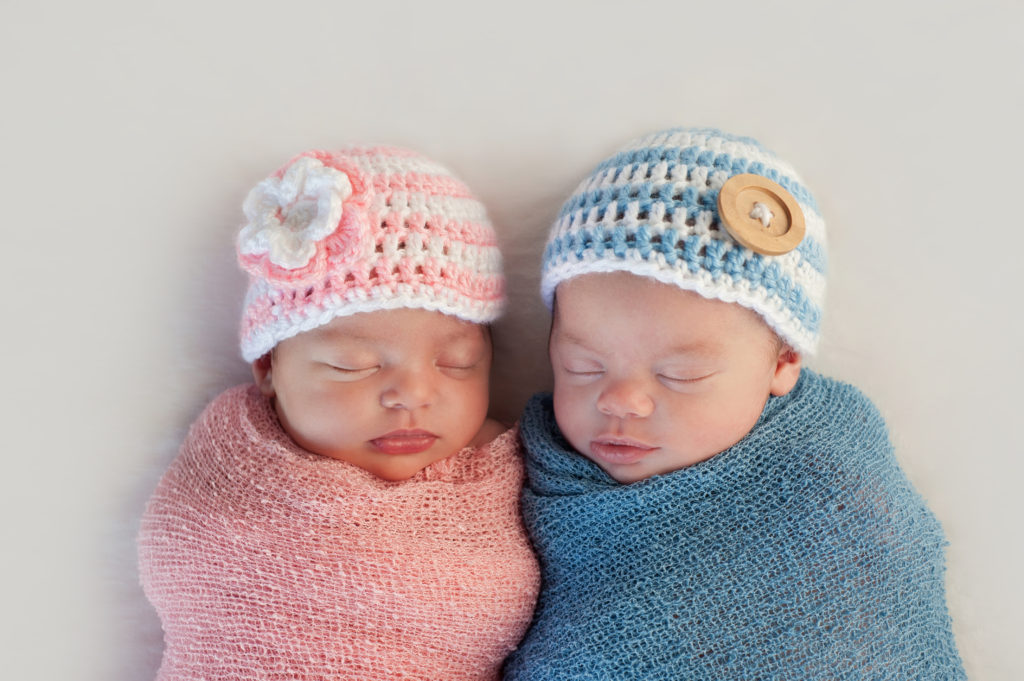
You’re probably familiar with the most common types of twins — fraternal and identical. However, there are actually a few other rare subtypes too that you may not have heard of.
Let’s take a closer look at the different types of twins:
What are fraternal twins?
So, what does fraternal twins mean? These types of twins, also known as dizygotic are basically non-identical twins. How are non-identical twins formed, we hear you ask? Well, they are the result of two separate eggs being fertilised by two separate sperm. They’re the most common type of twins, accounting for around two thirds of all twin baby bumps. This usually happens because the ovaries occasionally release not one, but two eggs in the same menstrual cycle. If both are fertilised, it can lead to the joys of not loving one but two precious babes. Fraternal twins can either be of the same sex or you could also end up with the best of both worlds! If you give birth to fraternal twins, it’s possible they won’t look alike.
What are identical twins?
If your two cuties look exactly the same then they’re identical twins, also known as monozygotic twins. These types of twins are less common than fraternal twins – around one third of all twins are identical. Now, you may be thinking – how do identical twins form? Well, this occurs when a single fertilised egg splits into two and grows into two separate embryos. Identical twins will be of the same gender, have the same blood type and share the same physical traits for example eye colour, hair colour and facial features.
And it doesn’t end just end there – there are also 4 other types of twins to look out for:
- Half-identical twins – this is the result of an egg splitting and only then gets fertilised, so they end up being a mix of fraternal and identical twins. These types of twins share the same DNA from the egg, but not the same DNA from the sperm.
- Mirror-image twins – these types of twins are exactly as their name suggests because their features are the mirror image of one another.
- Mixed chromosome twins – these twins begin their life as fraternal twins (from two fertilised eggs) which then combine into one. This results in a mixed bag of DNA.
- Superfetation: this is when a second, new pregnancy comes about during an initial pregnancy. The egg is fertilised by sperm and implanted in the womb days/weeks after the first one. That’s why bubs born from superfetation are often considered twins as they’re normally born during the same birth on the same day.
The Different Types of Twin Pregnancy
Whether twins are identical or not is only one of the differences between the types of twin pregnancy. Other distinctions are made based on whether your twinnies share a placenta and/or the membranes of the amniotic sac.
These differences are significant as each type have different risks. These need to be overseen by your midwife or doctor to make the pregnancy for you and your little ones as safe as possible. To get to grips with the three main types of twin pregnancy, it helps to know that the amniotic sac surrounding and protecting your bubs is made up of two membranes:
- Outer membrane – called the chorion
- Inner membrane – known as the amnion
Twin pregnancies fall into 3 main groups:
- Dichorionic Diamniotic (DCDA) twins – this is the most common type of twin pregnancy, and it also has the lowest risks. It’s where each twin has a separate chorion, amnion and placenta.
- Monochorionic Diamniotic (MCDA) twins – these types of twins are cocooned in a single chorion and share the same placenta, but each is snugly tucked in a separate amnion. Due to the shared placenta, the risks of this type of twin pregnancy are a little higher. However, there’s no need to worry as you’ll be offered more frequent scans so your angels can be monitored more closely.
- Monochorionic Monoamniotic twins – one of the burning questions that we often get asked is what are mono/mono twins? These types of twins share the same chorion, placenta and amnion. If you’re expecting with monochorionic-monoamniotic twins, you and your twinnies will be monitored closely. It’s also likely that you’ll be offered a planned birth earlier than you would if it was DCDA or MCDA twins.
How Twins Are Born

Twins are more likely to be born early and they’ll need more special care after they’re born in comparison to single bubs. We recommend discussing your birth options with your midwife or doctor early on in your pregnancy. The process of labour is pretty much the same as having one baby. However, your maternity team will normally advise you to have your babies electronically monitored. This is so that your babes get all the necessary care needed for the safest possible delivery.
Yes – you can have a natural birth with twins! Many mums-to-be think they have to have a caesarean when it comes to twins. However, more than 40% of twin births are natural births. You’re also more likely to have a natural birth if the first teeny tot is in a head-down position.
In some cases, there may be medical reasons as to why a natural birth isn’t advised. For example, if you’ve had a caesarean before, it’s not normally recommended that you have a natural birth with two little ones. In the UK, more than half of twins are delivered by caesarean. You may choose to have a planned caesarean, or your doctor may advise it due to the following:
- The first babe is lying feet, knees or bum first (breech)
- One twin is lying sideways (transverse)
- You have a low-lying placenta
- Your twins share a placenta
- You’ve had a complicated delivery with one baby before
It isn’t always easy to understand the biology behind twins, but regardless they’re sure to be the best thing to happen to you. Whether you’re about to welcome double the joy into your life or you’re planning on trying for a double whammy, we hope we’ve answered all your need-to-know questions. Hopefully, soon enough, you’ll have not one, but two little cuties bringing happiness to your family.


